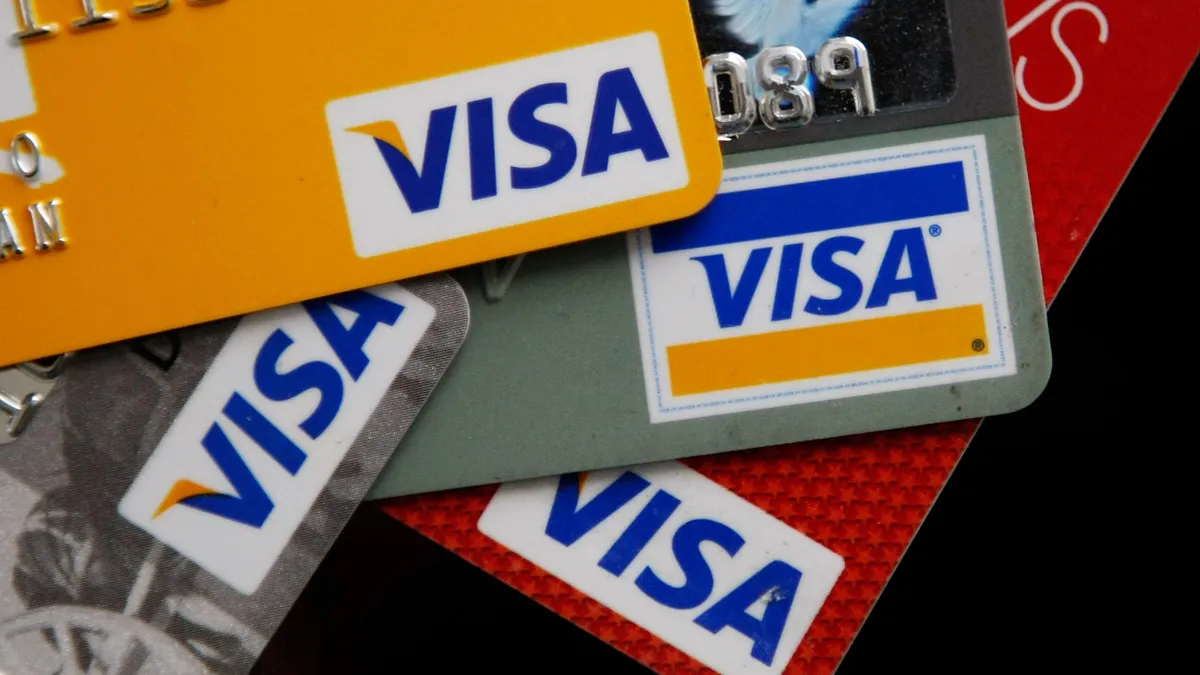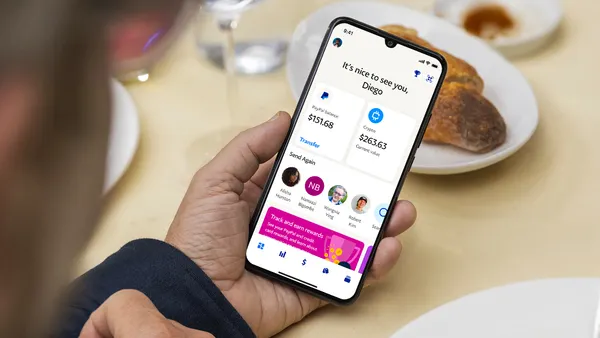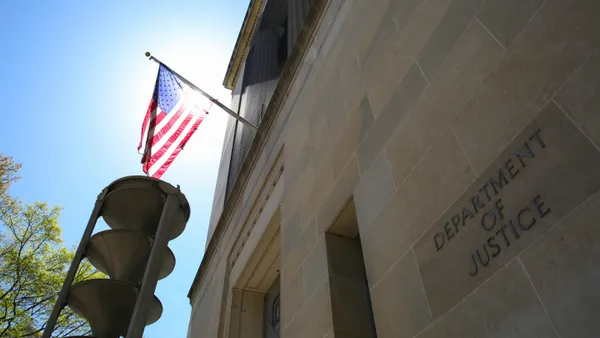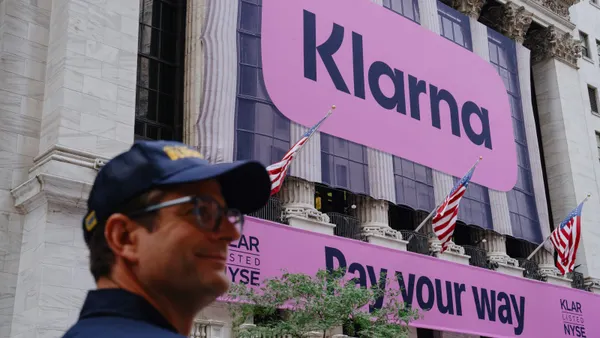Dive Brief:
- Bank and credit union trade groups spoke out against the U.S. Postal Service’s (USPS) postal banking pilot program which was launched last month, saying the government agency is incapable adequately managing an operation that includes financial services.
- USPS’s new limited services are available at just four locations, in Washington, D.C.; Baltimore; Falls Church, Virginia; and the Bronx in New York City, and allow patrons to cash business or payroll checks up to $500. The post office test follows a long history of USPS offering financial services, according to the online outlet Slate.
- Trade groups including the Consumer Bankers Association (CBA), the American Bankers Association (ABA) and the National Association of Federally-Insured Credit Unions (NAFCU) argue banking services should be left to financial institutions, and not be placed in the hands of a government agency already struggling with funding issues.
Dive Insight:
"The well-regulated, well-supervised American financial services system requires banks to have policies, procedures and controls to ensure adequate risk management, regulatory compliance, consumer protection, and privacy protection — areas the U.S. Postal Service has little to no knowledge of," Billy Rielly, a CBA spokesperson said on Tuesday. "Policymakers should be focused on encouraging banks to innovate and build on longstanding efforts to increase financial inclusion, not deferring to a federal agency without the capacity to safely provide millions of American families the reliable products and services they have come to expect from their bank."
Under the pilot program, customers can bring payroll or business checks up to $500 to participating post offices to buy single-use Visa gift cards.
While NBC News reports this week suggested that the new USPS financial services available now include bill pay, money orders, wire transfers and ATM access, the Washington Post reported that those services would be part of an expansion that also includes more locations after the holiday season.
In an emailed statement, USPS Spokesperson Kim Frum confirmed only the check-cashing services and declined to comment on any additional services.
Continuing the postal banking services beyond the limited test would require Congress to pass new legislation, but the program may act as a proof of concept, NBC reported.
The ABA said a government-subsidized banking service managed by the post office would threaten the progress of the Cities for Financial Empowerment (CFE) Fund’s Bank On program, an effort aimed at decreasing the number of unbanked households in the U.S.
"It’s easier than ever to open a bank account in this country, including Bank On-certified accounts, which are now available in more than half of all U.S. bank branches, and feature low costs, no overdraft fees, robust transaction capabilities such as a debit or prepaid card, and online bill pay," the group told the ABA Banking Journal on Monday. "Policies that create new incentives for Americans to remain unbanked undercut significant efforts to bring people into the banking system so they can build for their financial future."
Nonetheless, proponents argue the postal banking services could address the needs of unbanked and under banked people in the U.S. and at the same time buttress the money-losing operations of the postal service.
"This pilot, which is in collaboration with the American Postal Workers Union (APWU), is an example of how the Postal Service is leveraging its vast retail footprint and resources to innovate," Krum said by email. "Offering new products and services that are affordable, convenient and secure aligns with the Postal Service’s Delivering for America 10-year plan to achieve financial sustainability and service excellence."
About 5.4% of U.S. households — 7.1 million — were unbanked as of 2019, the Federal Deposit Insurance Corp. (FDIC) found in a biennial survey. That figure is down from 6.5% in 2017 but may turn upward as a result of the COVID-19 pandemic. The numbers skew higher among communities of color, the Federal Reserve found this year. About 13% of Black adults are unbanked, according to the central bank, and 27% are underbanked.
"Last week, USPS informed American consumers that it cannot manage its current mission of delivering mail on time," NAFCU President and CEO Dan Berger said in a statement on Tuesday. "Now, it has come to light that USPS is quietly expanding its reach into financial services without providing much clarity on how it plans to balance its current duties alongside this new undertaking."
To better help the underbanked and underserved, Berger said Congress should instead allow all credit unions the ability to add underserved areas to their fields of memberships. "The USPS already has its hands full with its current mission and lacks the bandwidth needed to run such a large and complex operation," he added.
The USPS, led by Postmaster General and Trump administration appointee Louis DeJoy, is expected to incur $160 billion in liabilities over the next 10 years, according to The Washington Post.
Postal banking history
Postal banking, which was once widespread in the U.S., could make financial services more accessible to millions of Americans. A University of Michigan study published in May found 69% of census tracts with a post office do not have a community bank branch.
In lacking postal banking, the U.S. is a bit of an outlier, according to the American Postal Workers Union. As of 2018, 91% of postal organizations worldwide offered banking services.
Congress established the Postal Savings System in 1910, and the program officially launched the next year, attracting a number of immigrants by offering information in 24 languages and handing out leaflets at global ports, according to Slate. In 1915, recent immigrants owned more than 70% of postal bank deposits despite comprising 15% of the population, the publication reported.
Nationwide postal banking deposits peaked at $3.4 billion in 1947. But in the 1960s, postal banking deposits cratered as banks raised their interest rates and steadily regained public trust. Regulators abolished postal banking in 1966.
Opposition to postal banking
Industry trade groups have spoken out against efforts to revive postal banking in the past.
The ABA, the CBA, the Credit Union National Association and The Clearing House urged officials in a May paper to find alternatives to postal banking that include low- and moderate-income consumers. The groups argued that the driver licenses or passports necessary to use such services may be expensive for some demographics.
In August 2020, NAFCU also pushed back on efforts by the nation’s largest bank, JPMorgan Chase, to lease space for the bank’s ATMs in post offices.
"Allowing Wall Street mega banks free [rein] to solicit customers from community post offices would amount to nothing more than a power grab aimed at bolstering profits," Berger said in a statement in response to reports that the New York City-based bank had held preliminary discussions with the USPS.
Longtime advocates for postal banking include lawmakers Sen. Kirsten Gillibrand, D-NY, who introduced the Postal Banking Act in 2008, and has repeatedly argued for post offices to offer expanded financial services, and Sen. Sherrod Brown, D-OH, who last year introduced a bill that would require banks to maintain "digital dollar wallets" so unbanked consumers could access stimulus payments.
The bill would have let consumers set up "FedAccounts" at local banks and post offices. A 2020 appropriations bill passed by the House included an amendment to allocate $2 million for a postal banking trial program.











